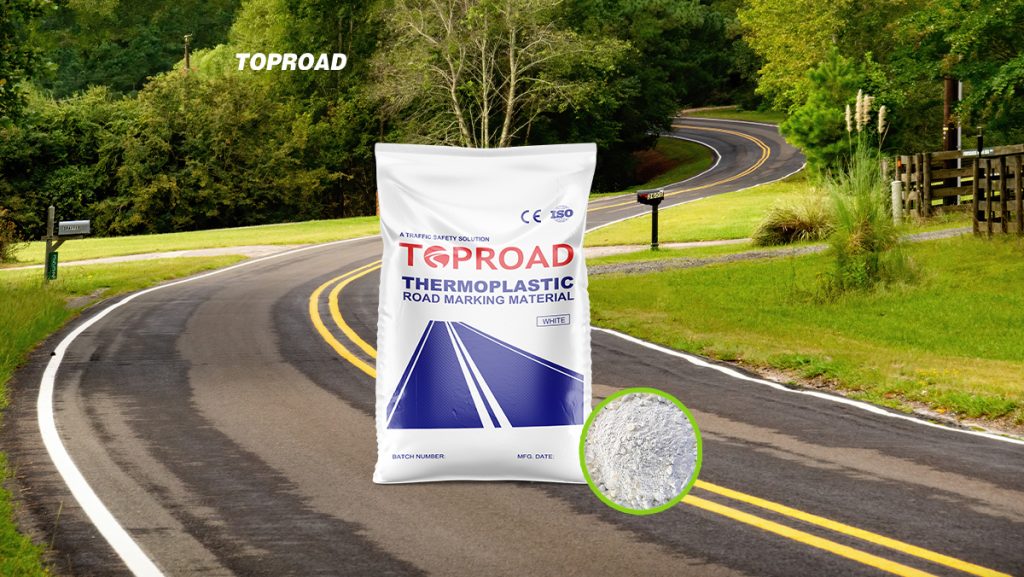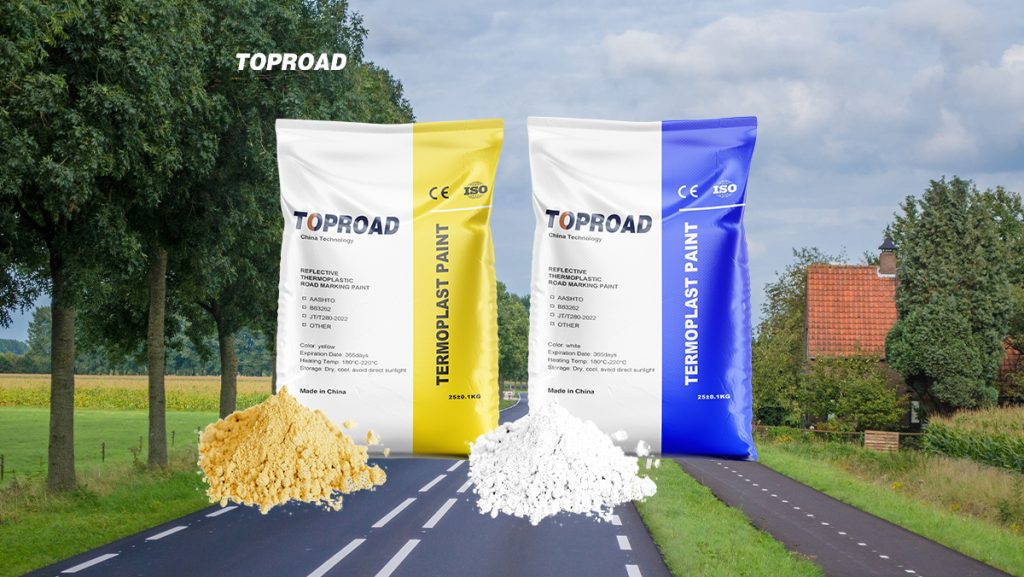Road Marking Paint and Machine Manufacturer
+86-15668659958
Road Marking Paint and Machine Manufacturer
+86-15668659958
1. Introduction
Hot-melt road marking paint, a thermoplastic material widely used in highway construction, plays a critical role in traffic management by providing durable, reflective, and skid-resistant road markings. Its rapid drying time (1–3 minutes) and long-term visibility under diverse climatic conditions make it a preferred choice for modern road infrastructure18. This article explores its composition, performance advantages, common challenges, and future trends.
2. Composition and Material Optimization
Hot-melt road marking paint primarily consists of synthetic resins, pigments, fillers, glass beads, and additives. Key components include:
Synthetic Resins: Such as C5 petroleum resin, which determines the paint’s thermal stability, adhesion, and fluidity. Studies show that resin content significantly affects softening points and bonding strength
Glass Beads: Pre-mixed or surface-sprinkled beads enhance retroreflection. Issues like uneven distribution or low sphericity can reduce nighttime visibility, necessitating windproof equipment during application
Additives: Antioxidants and UV stabilizers improve durability, while fillers like calcium carbonate adjust viscosity and cost-effectiveness
Optimal formulations balance these elements to meet standards such as BS 3262, which specifies requirements for softening point (≥65°C), luminance factor (≥50%), and glass bead content

3. Performance Advantages
Rapid Curing: Unlike solvent-based coatings, hot-melt paint solidifies within minutes, minimizing traffic disruption
Weather Resistance: Performs reliably in extreme temperatures (-30°C to 80°C) and humid conditions
Reflectivity: Embedded glass beads ensure visibility day and night, critical for road safety8.
Durability: High wear resistance extends service life to 2–3 years, reducing maintenance costs.
4. Common Challenges and Solutions
Discoloration: Caused by overheating during melting or inferior raw materials. Solutions include temperature control and pre-use quality testing
Poor Reflectivity: Results from uneven glass bead distribution or contamination. Standardized bead sphericity (>80%) and anti-wind equipment during application are recommended18.
Adhesion Issues: Low softening points or improper substrate preparation may cause peeling. Using compatible primers and optimizing resin ratios can mitigate this
5. Market Trends and Innovations
The global hot-melt road marking paint market is projected to grow steadily, driven by infrastructure investments and smart city initiatives. Key trends include:
Eco-friendly Formulations: Water-based additives and recyclable materials to reduce environmental impact
Smart Coatings: Integration with sensors for real-time traffic monitoring5.
Regional Demand: Asia-Pacific leads in consumption due to rapid urbanization, while Europe emphasizes compliance with stringent standards like BS 3262
6. Conclusion
Hot-melt road marking paint remains indispensable for modern transportation systems. Continuous advancements in resin technology, quality control, and sustainability will further enhance its performance. Collaborative efforts among researchers, manufacturers, and policymakers are essential to address existing challenges and meet evolving infrastructure needs.
References
For further details, refer to studies on material formulations, application techniques, and market forecasts. Standards such as BS 3262 and JC/T 2678-2022 provide additional technical guidelines.
This article synthesizes technical insights, practical challenges, and industry trends to offer a comprehensive overview of hot-melt road marking paint. For full access to cited sources, visit the provided URLs.

Our company is a professional manufacturer of road hot-melt coatings and road glass beads. If you are interested, please feel free to contact me via email at any time export@toproadtraffic.com
